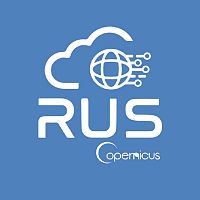›Optical and SAR Copernicus data for Land Applications
Optical and SAR Copernicus data for Land applications
RUS Copernicus will provide a two days hands-on training session where participants will access from their own laptop a Virtual Machine to exploit the open source toolboxes available in the RUS environment to download and process Sentinel data.
Please note that the RUS Copernicus Virtual Machines used for this training course can only be provided to citizens/residents of the Copernicus programme member countries (EU plus Iceland and Norway).
RUS hands-on exercises
Crop Mapping using Sentinel-1 and Sentinel-2
A wide range of different and complementary data (RADAR, optical, IR) from Sentinel-1,2,3 and now also from Sentinel-5P are nowadays available with an open and free policy. For some applications, such as agriculture, the synergy between these data has been already shown. For several applications, there has been an increasing interest in jointly using both RADAR and optical data to compensate for the limitations of using single data products alone. The combination of the weather and illumination independence and the sensitivity to the size, density, orientation and dielectric properties of SAR sensors together with the multi-spectral information related to the leaf structure, pigmentation and moisture captured by optical sensors can provide greater insight and context in many areas of application. This tutorial will demonstrate the usage of Open Tools available within the RUS environment to run a supervised classification over an agricultural area using Sentinel-1 GRD and Sentinel-2 products. You will also get familiar with SAR and optical data pre-processing using batch processing in SNAP and its command-line implementation (GPT) as well as using Python scripts.
Flood mapping with Sentinel-1
Amongst the different natural hazards, floods accounts for almost half of the weather-related disasters recorded during the last 20 years. Earth observation satellites can be used for flood mapping and assessment (e.g. early warning systems or post-disaster mapping). The adverse weather conditions during flooding events make Synthetic Aperture Radar (SAR) a suitable approach due to its independence on weather and solar illumination. Since the launch of Sentinel-1, a European C-band SAR satellite, routine collections of large amount of data with short revisit times are made freely available, enhancing the capabilities of flood response activities. Taking advantage of the all-weather and day-and-night sensing capabilities of SAR sensors, in this exercise we will demonstrate the use of Sentinel-1 GRD data to map the extent of a flooded area.
Burned area mapping with Sentinel-2
Out of control wildfires cause extreme long-term damage to the environment, wildlife, flora and property every year. Sentinel-2 imagery provides an accurate post-event analysis of wildfire extents since small areas can be detected and assessed, while at the same time reducing the need for ground surveys on often difficult terrain. In addition, the information obtained can be used to carry out risk assessments of affected and surrounding areas and Sentinel-2 data collected over time can be used to monitor environmental recovery, especially in relation to agriculture and forestry. In this exercise, you will learn the basics of image processing for burned area mapping: we will show you how to access the RUS service and how to download, process, analyse and visualise the free data acquired by the Copernicus satellites constellation. We will employ the ESA SNAP Sentinel-2 Toolbox to demonstrate the burned area mapping methodology.
Active fire detection with Sentinel-3
Open vegetation fires are critical elements acting as a driving force by modifying land cover, consuming terrestrial vegetation and reducing ecosystem services. Such fire activity acts across all vegetated areas but is usually very dynamic in its magnitude, impact and specific location. Due to this, frequent satellite Earth Observation data are a key tool to assess large-scale quantification of biomass burning and its effects. In this exercise, you will learn the basics of image processing for active fire detection: we will show you how to access the RUS Service and how to download, process, analyse and visualize the free data acquired by the Copernicus satellites. We will use the ESA SNAP Sentinel-3 Toolbox to demonstrate the methodology to detect active fires with the SLSTR instrument onboard Sentinel-3.
Tweets by spaceagendaTrack this event on your Apple calendar














 Estonia
Estonia